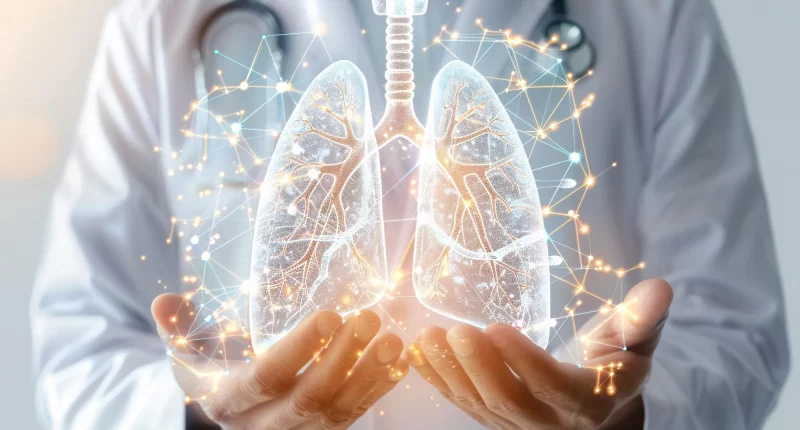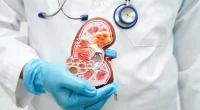Bronchiectasis is a lung disorder where the airways in the lungs become widened and damaged permanently. This leads to a continuous cough and a lot of mucus (phlegm) in the lungs. Over time, the condition gets worse and can cause serious lung infections.
People with diseases like cystic fibrosis and tuberculosis are more likely to develop bronchiectasis, but there are other reasons why it can happen too
There’s no healing for bronchiectasis, but treatments can help reduce lung infections and control the amount of mucus. Symptoms can vary from mild to severe.
As people get older, their chance of developing bronchiectasis increases, but it can affect anyone, not just older adults. In the United States, about 25 out of every 100,000 people have bronchiectasis. Among those aged 74 and older, this number goes up to about 272 out of every 100,000 people.
It seems like more people are being diagnosed with bronchiectasis recently.
Symptoms
Bronchiectasis symptoms typically start when mucus builds up in the lungs, setting off a troublesome cycle. As more mucus accumulates, it harbors more bacteria in the air passages, triggering inflammation and damaging the air passages. This perpetuates the cycle by causing even more mucus production.
Bronchiectasis manifests in three main kinds, distinguished by the shape of the bronchi visible on lung CT scans:
- Varicose: The rarest type, where bronchi are uneven, leading to either widened or constricted airways and increased mucus production.
- Cylindrical: The most frequent type, characterized by even, cylinder-formed bronchi.
- Cystic: Nearly as common as cylindrical bronchiectasis, but with bronchi forming cysts clusters, representing the most serious form.
Despite their differences in bronchial shape, all types of bronchiectasis share similar symptoms. These include the enlargement of the lung’s breathing tubes (bronchi) and other common signs such as:
- Persistent daily cough lasting months or even years.
- Regular production of large amounts of sputum.
- Difficulty breathing and wheezing while
- Chest pain and occasionally blood while coughing.
In individuals with bronchiectasis, contracting an infection can lead to flare-ups that further compromise lung function and exacerbate symptoms.
Complications
Complications of bronchiectasis can develop over time, particularly during infections and flares. These complications can severely affect respiratory function and overall health.
Respiratory Failure
This occurs when the lungs fail to transfer enough oxygen into the bloodstream or to remove carbon dioxide efficiently. Symptoms include breathing difficulties, fast breathing, a constant require for additional air, sleepiness, and bluish discoloration of the skin, lips fingernails.
Atelectasis
This condition occurs when a part of the lung fails to inflate correctly, leading to symptoms such as breathing troubles, fast breathing, heightened heart rate, and bluish skin.
Heart Failure
In modern levels of bronchiectasis, declining lung function can stress the heart, impairing its ability to pump enough blood to the body’s needs. Symptoms may include difficulty breathing, fatigue, and swelling in the neck veins, abdomen, feet, legs, and ankles. If left untreated, heart failure can be life-threatening.
Causes
Bronchiectasis develops when areas of the bronchial tree permanently widen or dilate, often due to a variety of causes.
Infections
Several infections, including pneumonia, non-tuberculous mycobacteria, and tuberculosis, and childhood illnesses like whooping cough and measles, have been linked to bronchiectasis. Immunodeficiency conditions such as leukemia, hypogammaglobulinemia, HIV and AIDS, and treatments that weaken the immune system can also contribute.
Other Factors
Bronchiectasis can also result from conditions like allergic bronchopulmonary aspergillosis, Blockage by foreign bodies or tumors, gastro-esophageal reflux, breathing of toxic smoke, and auto-inflammatory disorders like lupus, rheumatoid arthritis, Crohn’s disease, or ulcerative colitis. Some congenital conditions like cystic fibrosis are also known causes.
Specific Cases
In children, cystic fibrosis is a significant cause of bronchiectasis, termed CF bronchiectasis. And alsoNon-CF bronchiectasis refers to cases where bronchiectasis occurs without cystic fibrosis. Additionally, between 7% to 25% of patients with chronic obstructive pulmonary disease or asthma also develop bronchiectasis, although the exact relationship between these conditions remains unknown.
Diagnosis
Diagnosing bronchiectasis involves looking for signs like a persistent cough, frequent lung infections, and mucus in the blood.
Doctors use several tests to diagnose it:
- Chest X-ray: This helps to see the general condition of the lungs.
- CT scan: A more detailed imaging test of the lungs to check for widened airways.
- Pulmonary Function Test (PFT): Measures how well the lungs are working.
Sometimes, a bronchoscopy is done where a lighted tube is used to look inside the lungs and possibly take tissue samples.
Despite these tests, specific microorganisms that cause bronchiectasis are usually not found in laboratory tests. Scientists have observed that the types of bacteria present can change as the disease progresses. This understanding helps doctors manage the condition better.
Treatment
Treatment for bronchiectasis focuses on early determination and management to prevent the disease from worsening and causing serious complications. Many treatment strategies have been adapted from those used for individuals with cystic fibrosis.
The goals of treatment include:
- Managing Underlying Conditions and Infections
- Mucus Clearance
- Preventing Complications
Different kinds of treatments are:
Chest Physical Therapy
It is also termed percussion therapy or chest-clapping, this technique is usually performed by a respiratory therapist. It involves rhythmic pounding on the chest and back to help loosen mucus, making it easier to cough up. Devices like electric chest clappers or therapy vests that use airwaves can aid in this process. Studies suggest that CPT can enhance lung function and life’s quality.
Hydration
Drinking plenty of fluids helps to thin out mucus, making it less sticky and effortless to clear from the lungs.
Medications
Antibiotics are commonly used to treat infections, either orally or intravenously. Inhaled antibiotics may also be prescribed, although their long-term effects require further study. Mucus thinners and expectorants help to loosen mucus, while breathing in corticosteroids reduces airway inflammation. Bronchodilators relax the muscles over the airways, making it easier to breathe, especially when used prior to CPT.
Oxygen Therapy
Administered through nasal prongs or masks, and it boosts oxygen levels in severe cases of bronchiectasis, improving overall breathing capacity.
Surgery
Surgical intervention may be considered in cases where only a specific part of the air passage is affected and needs removal, or if there is severe bleeding that requires control. In extreme situations, lung transplantation may be necessary, particularly when bronchiectasis is associated with cystic fibrosis.
Effective treatment for bronchiectasis involves a combination of these approaches tailored to each individual’s condition and symptoms. Early intervention and ongoing management are crucial for improving quality of life and preventing complications.
Summary
Bronchiectasis is a lung condition characterized by widened and damaged airways, leading to persistent cough, mucus buildup, and recurrent infections. Diagnosis involves imaging tests like chest X-rays and CT scans, alongside pulmonary function tests and bronchoscopy for tissue samples.
Treatment aims to manage infections, clear mucus through techniques like chest physical therapy, and prevent complications with hydration and medications such as antibiotics and bronchodilators. Oxygen therapy can be necessary in severe cases, while surgery may be considered for localized or severe bleeding issues. Early diagnosis and comprehensive treatment strategies improve outcomes and enhance the quality of life for individuals with bronchiectasis.







